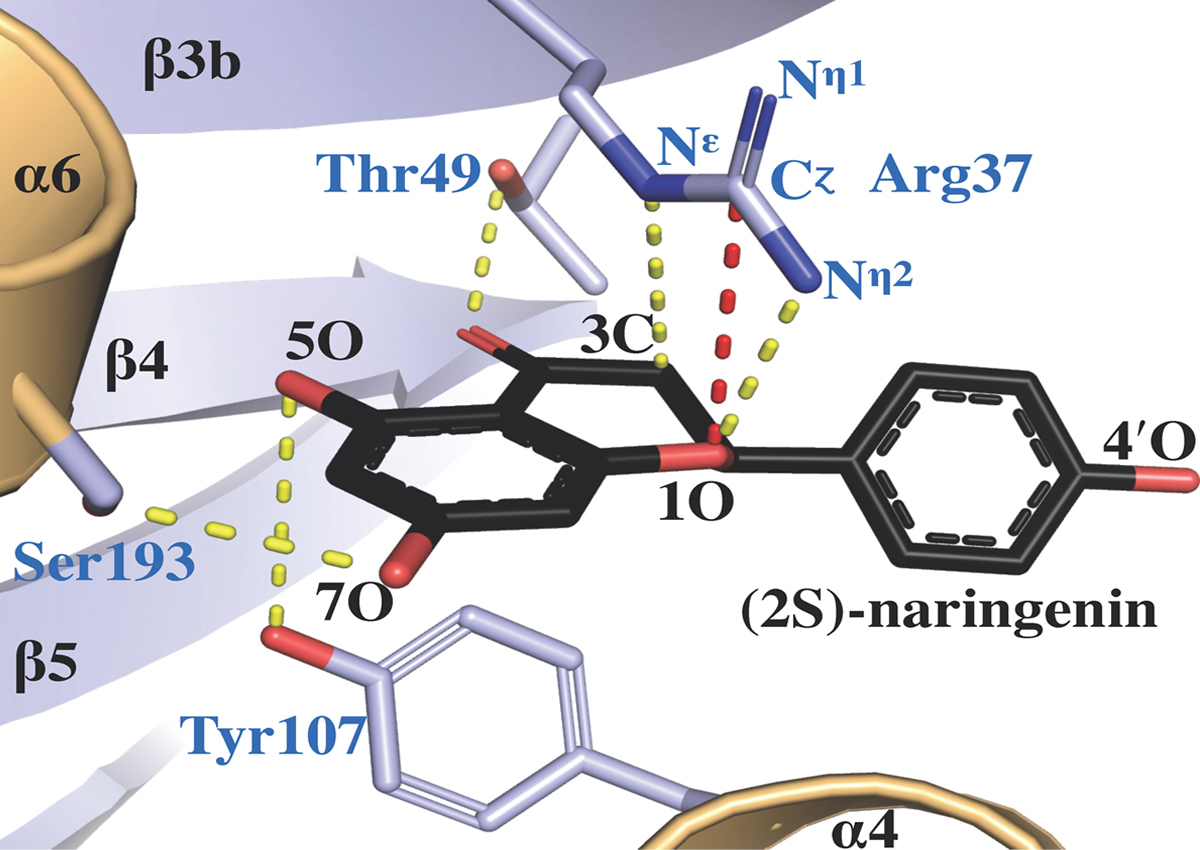
Plant Enzyme Could Guide Development of Medicines and Other Products
September 11, 2019| |
Plants manufacture compounds to help them repel pests, attract pollinators, cure infections and protect themselves from excess temperatures, drought, and other hazards in the environment. Salk Institute researchers who are studying how plants evolved the abilities to make these natural chemicals have now uncovered how an enzyme called chalcone isomerase evolved to enable plants to make products that are important to their survival. The researchers hope that this knowledge facilitates the manufacturing of products that are beneficial to humans, including medications and improved crops.
Chalcone isomerase acts as a catalyst to accelerate plant chemical reactions. It also helps ensure that chemicals made in the plant are in proper form since molecules with the same chemical formula can take two different variations that are mirror images of each other (called isomers). The researchers identified the part of chalcone isomerase's structure that allowed it to catalyze reactions incredibly fast while also ensuring it makes the proper, biologically active isomer. These reactions lead to a host of activities in plants, including converting primary metabolites like phenylalanine and tyrosine into vital specialized molecules called flavonoids.
The researchers found that the amino acid arginine, one of many amino acids linked together in chalcone isomerase sat in a location, shaped by evolution, that allowed it to play the key role in how chalcone isomerase reactions were catalyzed. The researchers said that their new understanding of chalcone isomerase enables them to design molecular systems that can carry out a particular task even in the next generation of nutritionally dense crops capable of transforming the greenhouse gas carbon dioxide into molecules essential for life.
For more details, read the article in Salk News.
| |
You might also like:
- Researchers Use NBTs to Develop Tobacco Plants as Biofactories
- ISAAA Pocket K No. 26: Molecular Pharming and Biopharmaceuticals
- ISAAA Pocket K No. 29: Functional Foods and Biotechnology
Biotech Updates is a weekly newsletter of ISAAA, a not-for-profit organization. It is distributed for free to over 22,000 subscribers worldwide to inform them about the key developments in biosciences, especially in biotechnology. Your support will help us in our mission to feed the world with knowledge. You can help by donating as little as $10.
-
See more articles:
-
News from Around the World
- GM Crop Planting Increased ~113-fold Since 1996
- Burkinabe's National Biosafety Laboratory Opened
- Students Concerned about Future of Biotech Innovations in Uganda
- Discovery of Genes Could Help Reduce Fertilizer Pollution in Waterways
- Plant Enzyme Could Guide Development of Medicines and Other Products
- Half of Australians Give ‘Conditional Support' to GM foods, Study Reveals
- Utrecht Biologists Discover A Way to Make Plants Flood Tolerant
-
Research Highlights
- First Pea Genome to Help Improve Future Crops
- Scientists Investigate Grapevine's Population Genetics Using Structural Variants
-
Plant
- Use of CRISPR-Cas9 Revealed OsCAF1 Influences Chloroplast Development in Rice
-
Read the latest: - Biotech Updates (November 12, 2025)
- Gene Editing Supplement (October 29, 2025)
- Gene Drive Supplement (February 22, 2023)
-
Subscribe to BU: - Share
- Tweet

